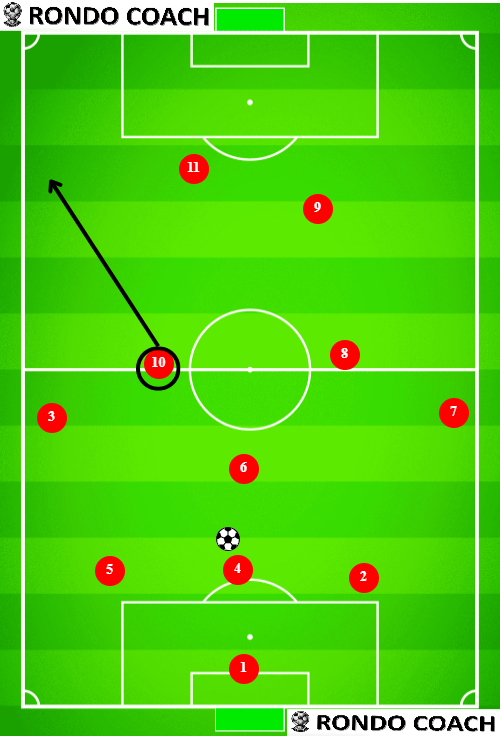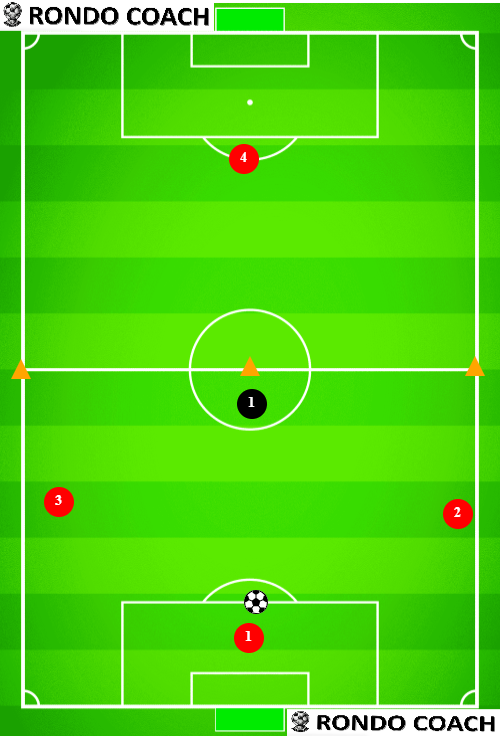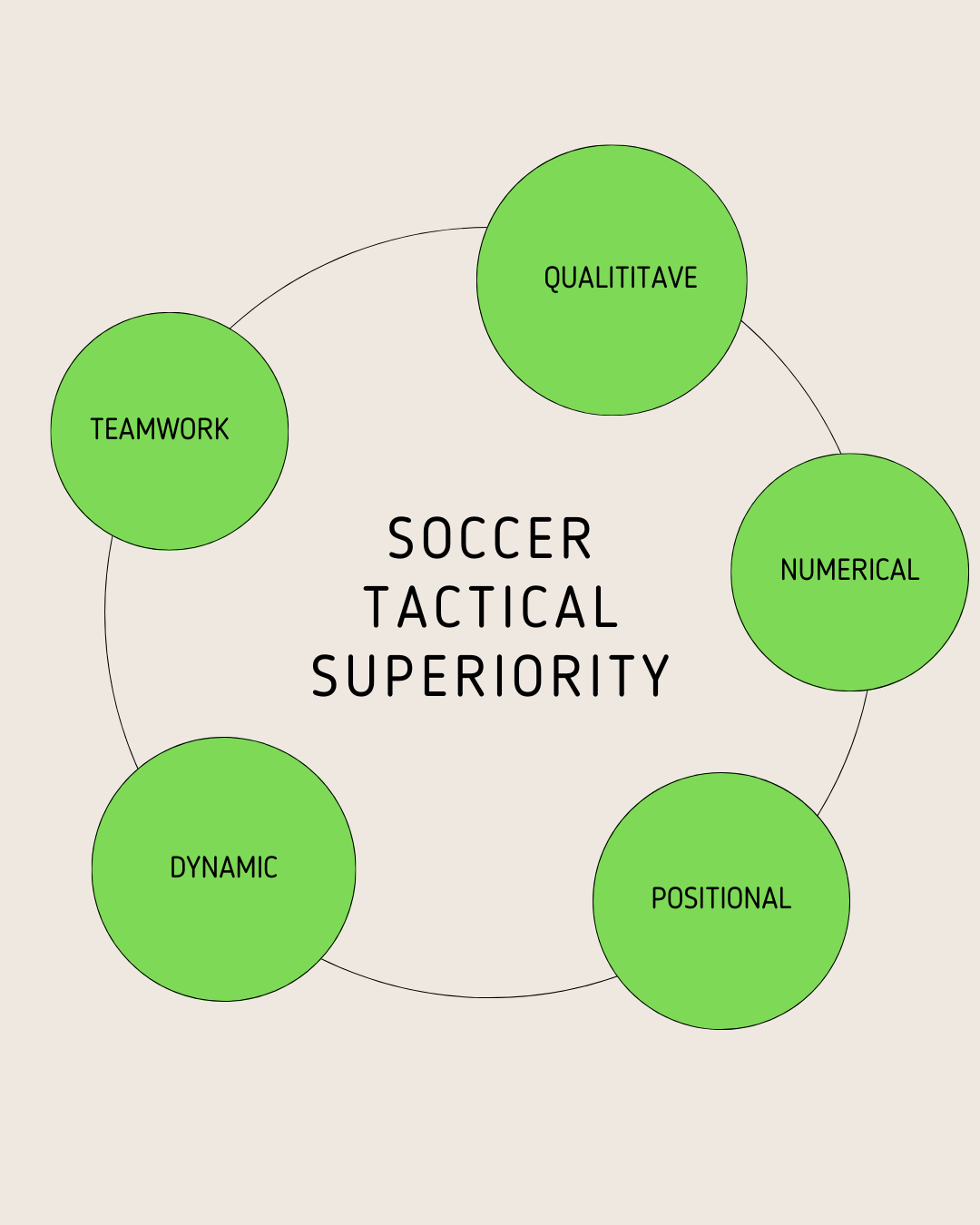Quality Masterclass Mentality: Vertical Tiki-Taka is the Future
Tiki-taka is the style of play that has defined 21st-century soccer. At its peak, Barcelona under Pep and the Spanish National Team was dominating the world of soccer. That patient passing and keeping the ball until there was an opening was so beautiful, yet annoying to watch. The idea that you cannot concede a goal if you have the ball in your possession made it difficult to watch sometimes. The team would keep the ball for so long and always choose the safe pass. So essentially, we started seeing the backline passing to each other seemingly forever. The birth of the vertical tiki-taka was needed…
Something changed and we started to see the need to modify the mentality. Mourinho saw it first when countering Barcelona (with Inter and Chelsea), but we saw it so much in the recent decade. Teams became very good at defending. At the most recent World Cups, it feels like the worst teams can still hold a 0:0 draw against the best teams. So, playing patient, controlling, possession-based tiki-taka will just not work. Instead, what needed to happen was to move the ball quickly when in possession to unsettle the opponent.
How does vertical tiki-taka compare to tiki-taka?

How is it the same?
First and foremost, the idea of having possession is still the same. Starting from a goal-kick against a low-block opposition, you won’t be able to see the difference. The team will not try random crosses or skipping the midfield. Instead, the goal is to maintain control of the ball with passes in triangles while moving the play toward the opposition box.
Out of possession, the relentless pressing is also similar. The idea of recovering the ball within 5 seconds of losing it, is still valid. In fact, in La Masia, the famous FC Barcelona youth academy, they teach that the team doesn’t steal the ball. Instead, they recover possession. That is because the ball is theirs to have and the reason why they don’t have it is because they lost it. It might sound like a negligible difference, but it is important. The mentality of fighting to keep the ball as a team practiced through thousands of variations of rondos, is vital.
How is it different?
The main difference in the vertical tiki-taka is how build-up play happens. Namely, once the team recovers possession, it needs to quickly move forward to attack. This leaves very little time for the opponents to get back in the right position to defend. If we leave the opposition time to get in shape, we will limit the opportunities to get tactical advantages – numerical, positional, or dynamic.
Let’s say that we recover the ball at the edge of our penalty box, while the opponents try to attack on the wing with both their wing-back overlapping their winger. The standard tiki-taka mentality would make sure we keep possession and pass sideways or back to the keeper until we get into shape. Unfortunately, that allows for the other team to come back to shape. Instead, imagine if we send the ball down the flank with the winger and/or wing-back sprinting into a counterattack. And from there looking for the striker or the winger on the other side.
This will give us at least a dynamic advantage, where everybody will have to sprint back instead of actively defending and pressing the ball because they don’t feel that they have the cover at the back. Their wing-back will be tired after the attacking movement. Also, the confusion with the winger on who is running back to cover. If neither does, then we have the numerical advantage. If both run back, then we have time to pick the pass that we want with no pressure.
Advantages of using vertical tiki-taka
Assuming we are playing against a team that has some desire to attack against us, this is a very effective tactic. We get all the benefits of the tiki-taka, to maintain possession and control. With the right players and their decision-making abilities, we can confuse the oppositions. Since defending is where the team cohesion really matters, changing between direct attacking and patiently maintaining possession can truly frustrate and be tiresome. Also, it can be really devastating when we create 1v1 opportunities for our attackers. Any qualitative mismatch is more amplified when we are given 1v1 chances. The vertical tiki-taka gets us in those situations.
Disadvantages of the vertical tiki-taka
The downsides of tiki-taka are still present. When playing against low-block teams, often it looks like a fruitless exercise. If the other team only defends, then there is no counter-fast buildup that can happen. Therefore, no benefit there. Similarly, the risk of having a bad pass in the back line between the defenders or the keeper is still there. Perhaps a vertical pass to the striker is not as risky, but if that is blocked then the logic is to still maintain possession by passing sideways or backward. That comes with the same risk and often can be devastating. In fact, a bad pass can lead us to concede and in effect results in the opponents transferring to a low-block, catenaccio defense that is even harder to break.
When to use vertical tiki-taka?
Let us look at the teams that have used vertical tiki-taka or any variations and subsets of it. The most obvious ones are Barcelona, Ajax, Bayern, Manchester City, Arsenal, Liverpool… When did it work? When the teams had strikers like Harland, Messi, Salah, Mane, and Van Persie, then it worked very well. The importance of the ability to win the majority of the duels 1v1, 2v2, or even 2v3, and score goals cannot be overstated. Similarly, the ability to defend without numerical advantage gives the opportunity to keep the attackers high, so that a direct pass to them is possible. I am sorry to disappoint you, but if you don’t have the technical, and overall qualitative advantages, this is not for you.
Formations to use for vertical tiki-taka
To maintain possession, you have to get a numerical advantage by keeping the defensive line high. The formations are actually similar to the standard tiki-taka. The classic 4-3-3 and the variations are always appropriate. The 4-4-2 diamond can work great, using mezzalas for the slower buildup. Also, a more defensive 5-2-3 formation that uses the three attackers as outlets can give the counter-attacking opportunities while maintaining the solidity in defense.













